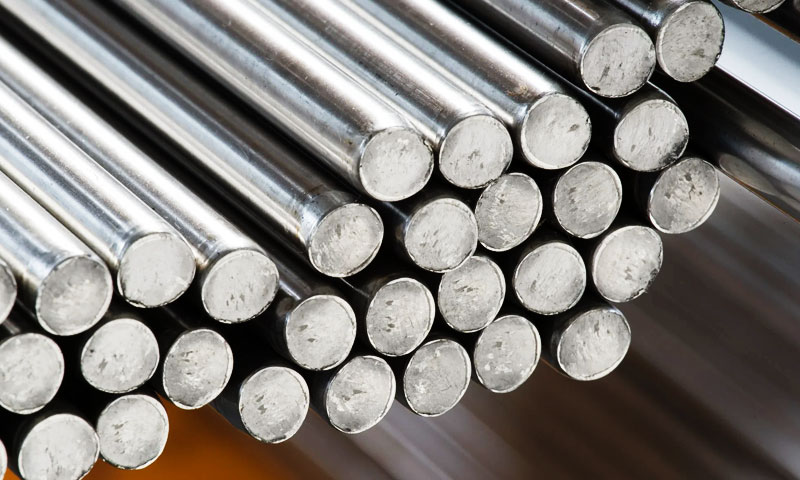1. Giới thiệu
1.4122, commonly referenced by its European designation X39CrMo17-1, is a martensitic chromium stainless steel designed to deliver a blend of độ cứng, wear resistance and reasonable corrosion performance.
It occupies a practical middle ground between tool steels and corrosion-resistant stainless grades: hardenable by heat treatment to high strengths and abrasion resistance, yet offering better resistance to corrosion than many carbon steels.
2. Là gì 1.4122 thép không gỉ
1.4122 (also called X39CrMo17-1) là a martensitic chromium thép không gỉ — a hardenable, magnetic stainless grade designed to deliver a balance of high hardness/wear resistance Và Kháng ăn mòn vừa phải.
Engineers choose 1.4122 for components that require sharp edges and durable cutting surfaces (Dao kéo), precision shafts and spindles, wear parts and certain valve or pump components where moderate corrosion resistance is adequate.
It is distinct from austenitic stainless steels (VÍ DỤ., 304) that are non-magnetic and highly corrosion-resistant, and from ferritic grades that are not hardenable by quenching;
1.4122’s defining characteristic is its martensitic microstructure after quenching, which produces high hardness and strength.
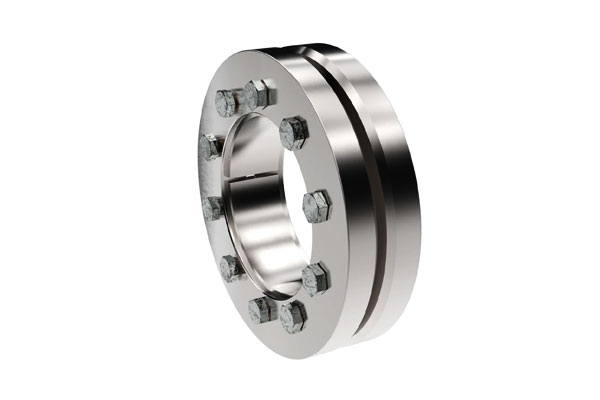
3. Thành phần hóa học của 1.4122 thép không gỉ
Below is a clean, professional table showing the chemical composition ranges for 1.4122 (X39CrMo17-1) stainless steel together with a concise, engineering-focused description of the role each element plays in this alloy.
| Yếu tố | Phạm vi (wt%) | Primary role(S) — concise |
| C (Carbon) | 0.33–0.45 | Main hardening agent — increases martensite hardness and wear resistance; reduces toughness and weldability at high levels. |
| Cr (Crom) | 16.5–17.5 | Provides corrosion passivity and contributes to hardenability and carbide formation. |
| MO (Molypden) | 0.80–1.30 | Improves hardenability, strength and resistance to localized corrosion. |
| TRONG (Niken) | ≤1.00 | Minor toughness aid; kept low to retain martensitic response. |
| Mn (Mangan) | ≤1.50 | Deoxidizer and mild hardenability aid. |
Và (Silicon) |
≤1.00 | Deoxidizer and modest solid-solution strengthener. |
| P (Phốt pho) | ≤0.04 | Impurity — kept low to avoid embrittlement and fatigue loss. |
| S (Lưu huỳnh) | ≤0,015 | Minimized (not a free-machining grade) because it lowers toughness and fatigue performance. |
| Fe (Sắt) | Sự cân bằng | Matrix element — forms the martensitic steel base. |
| Trace elements (Của, V, Cu, N, vân vân.) | tiêu biểu <0.05Cấm0,20 | Small micro-alloying effects or tramp elements; can refine grain or slightly modify properties when present. |
4. Tính chất cơ học của 1.4122 thép không gỉ
Mechanical properties vary with heat treatment state. Below are representative ranges used for design guidance.
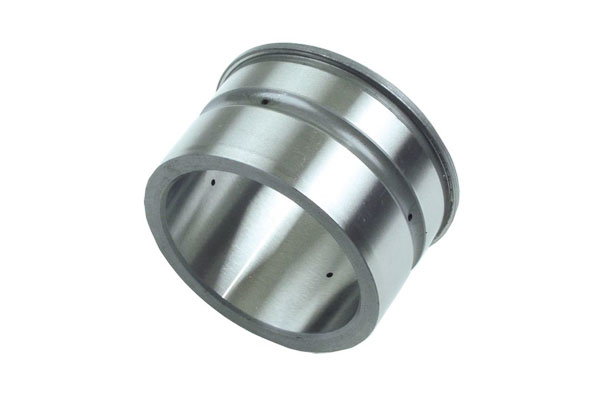
| Tình trạng / treatment | Độ cứng (HRC) | Độ bền kéo (Uts, MPA) | 0.2% Proof / Năng suất (MPA) | Kéo dài (MỘT, %) | Charpy v-notch (khoảng., J) |
| Mềm mại / bình thường hóa (delivery) | ~20–30 HRC | ~500–700 MPa | ~300–450 MPa | 10–18 % | 30–60 J |
| Dập tắt & tempered → ~40 HRC (typical engineering temper) | ≈38–42 HRC | ~800–950 MPa | ~600–800 MPa | 8Mạnh12 % | 15–30 j |
| Dập tắt & tempered → ~48–52 HRC (độ cứng cao) | ≈48–52 HRC | ~1,000–1,300 MPa | ~800–1,100 MPa | 3–8 % | 5–20 j |
| Maximum hardening (gần 55+ HRC) | >55 HRC | >1,300 MPA | cao (approaching UTS) | thấp (<3 %)* | thấp (<10 J) |
5. Magnetic and Physical Properties of 1.4122 thép không gỉ
Understanding the magnetic and physical properties of 1.4122 stainless steel is critical for design engineers, particularly when specifying components for precision machinery, dụng cụ, or applications where thermal expansion and conductivity matter.
| Tài sản | Giá trị điển hình | Ý nghĩa kỹ thuật |
| Tỉ trọng | 7.75–7.80 g/cm³ | Weight calculations, dynamic load, Thiết kế thành phần |
| Độ dẫn nhiệt | 19–24 W/m·K | Heat dissipation, machining and thermal distortion |
| Hệ số giãn nở nhiệt | 10–11 ×10⁻⁶ /K | Dimensional stability under thermal cycles |
| Nhiệt cụ thể | ~ 460 j/kg · k | Thermal management during processing |
| Hành vi từ tính | Sắt từ | Consider in sensor proximity, electronic interference, magnetic assembly |
6. Kháng ăn mòn
1.4122 stainless steel provides Kháng ăn mòn vừa phải, superior to plain carbon steels but inferior to austenitic stainless steels.
Environments where it performs acceptably
- Fresh water and mildly oxidizing industrial atmospheres
- Organic acids and mild chemical environments, when polished or passivated
Giới hạn
- Not recommended for môi trường giàu clorua (nước biển, nước muối) where pitting and crevice corrosion become significant.
- Localized corrosion resistance decreases with increasing hardness and tempering that expose microstructural heterogeneities.
Surface finishing and passivation
- đánh bóng to a fine finish and thụ động hóa học (VÍ DỤ., nitric acid treatment) improve corrosion performance by strengthening the passive film.
- Lớp phủ (sơn, mạ) or cathodic protection are common for long service life in marginal environments.
7. Heat Treatment and Hardening
Điều trị nhiệt tailoring is central to using 1.4122 có hiệu quả.
Typical hardening schedule
- Austenitizing: heat to roughly 980–1020 °C (typical range for martensitic stainless steels; exact temperature depends on section size and furnace control) to form austenite.
- Làm dịu đi: rapid cooling in oil or polymer quench to transform to martensite. Water quenching may be used but increases risk of distortion and cracking.
- Ủ: reheat to 150Mạnh600 ° C. depending on required final hardness/toughness balance.
Lower temper temperatures yield higher hardness and lower toughness; higher temp yields lower hardness but better ductility and impact resistance.
Hardening response
- Carbide-forming elements (Cr, MO) and carbon content drive hardenability. 1.4122 exhibits good response allowing designers to select temper cycles for specific mechanical targets.
Các hiệu ứng
- Strength increases dramatically after quench and temper.
- Độ dẻo dai can be restored partially by tempering; there is a well-known tradeoff between hardness and toughness.
- Khả năng gia công generally worsens after hardening; most machining is done in annealed or partially tempered conditions.
8. Machinability and Fabrication
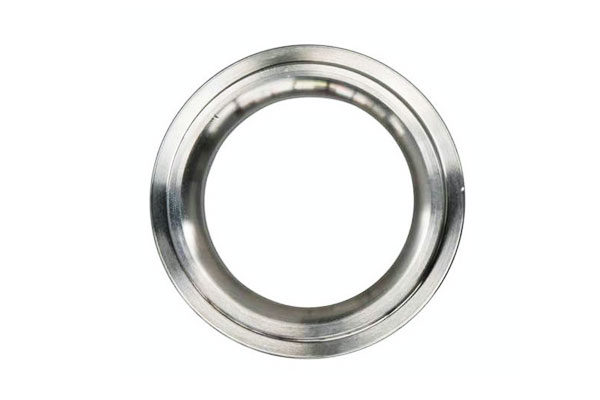
Khả năng gia công
- Medium in annealed condition. In soft condition, 1.4122 machines comparable to other martensitic grades with appropriate tooling and cutting speeds.
Use sharp high-speed tooling, adequate coolant and conservative feeds when machining hardened portions. - Poor when hardened. Độ cứng >45 HRC substantially increases tool wear; grinding and carbide tooling are typical.
Khả năng hàn
- Giới hạn. High carbon and martensitic structure make the steel susceptible to hydrogen-induced cold cracking. Welding generally requires:
-
- Làm nóng trước (VÍ DỤ., 150–250 °C depending on thickness)
- Low hydrogen electrodes
- Post-weld tempering or PWHT to relieve residual stresses and soften the HAZ
- For critical parts, welding is avoided or performed with post-weld heat treatment.
Hình thành
- Hình thành lạnh: limited in hardened state; better to form in annealed condition and then harden.
- Hình thành nóng: may be used within controlled windows but requires subsequent heat treatment to restore designed properties.
9. Ưu điểm và hạn chế
Ưu điểm của 1.4122 thép không gỉ
- Độ cứng tốt: can be heat treated to a wide range of hardness and strength values.
- Balanced corrosion resistance: superior to carbon steels in many environments.
- Đang đeo điện trở: suitable for cutting edges, shafts and lightly loaded wear parts.
- Từ tính: useful where ferromagnetic behaviour is needed.
Hạn chế của 1.4122 thép không gỉ
- Weldability limitations — requires preheat and PWHT for critical joins.
- Cold formability: poor in hardened state; must be formed in annealed condition.
- Corrosion limits: not recommended for seawater or high chloride environments without protective measures.
- Machining when hardened: high tool wear, special tooling required.
10. Ứng dụng công nghiệp của 1.4122 thép không gỉ
1.4122 is used where a combination of Độ cứng bề mặt cao, Đang đeo điện trở, và khả năng chống ăn mòn vừa phải được yêu cầu:
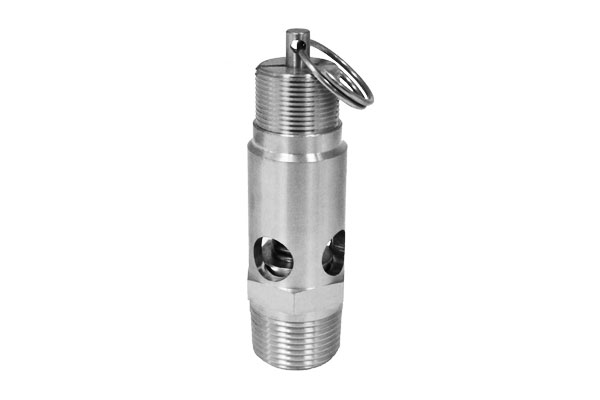
- Cutlery and surgical tools: những con dao, scissors and razors benefit from the balance of hardness and stainless behaviour.
- Mechanical engineering: trục, trục chính, pins and small gears that require precision, edge retention and good wear lifetime.
- Pumps and valves: thân cây, seats and components exposed to fresh water or buffered fluids.
- Tooling and molds: for polymer processing and light tooling duties where corrosion resistance is helpful compared with plain tool steels.
- Other niche uses: mang các cuộc đua, small structural components, and certain fasteners where hardness and magnetic response are advantageous.
11. Comparison with Related Stainless Steels
1.4122 (X39CrMo17-1) là a martensitic chromium stainless steel with balanced hardness, kháng ăn mòn, and wear properties.
To guide material selection, it is helpful to compare it with other commonly used martensitic and chromium stainless steels, bao gồm 1.4034 (X46Cr13) Và 1.4112 (X90CrMoV18).
| Tài sản / Hợp kim | 1.4122 (X39CrMo17-1) | 1.4034 (X46Cr13) | 1.4112 (X90CrMoV18) | Engineering Notes |
| Carbon (C) | 0.36–0.44% | 0.42–0.50% | 0.85–0.95% | Carbon controls hardness and wear resistance; higher C increases hardness but reduces ductility. |
| Crom (Cr) | 16–18% | 16–18% | 16–18% | Chromium provides corrosion resistance; all three are martensitic grades with moderate corrosion resistance. |
| Molypden (MO) | 0.8–1,2% | 0–0.2% | 0.8–1,2% | Mo improves pitting and general corrosion resistance, đặc biệt là trong 1.4122 Và 1.4112. |
| Vanadi (V) | Dấu vết | Dấu vết | 0.1–0,3% | V increases hardness and wear resistance, được sử dụng trong 1.4112 for high-wear tools. |
| Độ bền kéo (MPA) | 800Mạnh1100 (dập tắt & nóng tính) | 700Mạnh1000 | 1000Mạnh1400 | 1.4112 is a high-carbon grade designed for maximum wear; 1.4122 balances strength and toughness. |
Độ cứng (HRC) |
50Mạnh55 | 48–52 | 56Mạnh60 | 1.4112 achieves higher hardness due to higher carbon; 1.4122 suitable for tooling and shafts. |
| Kháng ăn mòn | Vừa phải | Vừa phải | Trung bình đến thấp | 1.4122’s Mo addition improves resistance to mild oxidizing environments over 1.4034. |
| Khả năng gia công | Vừa phải | Tốt | Nghèo | Carbon cao 1.4112 is more difficult to machine; 1.4122 balances machinability with hardness. |
| Các ứng dụng điển hình | Dao kéo, dụng cụ, Trục bơm, Van | Dao kéo, dụng cụ phẫu thuật, các bộ phận cơ học | High-wear tools, những con dao, industrial blades | Selection depends on required hardness, kháng ăn mòn, and machining constraints. |
12. Phần kết luận
1.4122 (X39CrMo17-1) is a practical martensitic stainless steel that provides a versatile combination of độ cứng, wear resistance and moderate corrosion resistance.
Its capability to be tailored through heat treatment makes it a go-to choice for cutlery, trục, valve parts and tooling applications where a compromise between stainless behaviour and high hardness is required.
Câu hỏi thường gặp
What is the typical hardness range achievable for 1.4122 thép không gỉ?
In delivery/softened condition about 27–33 HRC. After quench and temper the alloy can be adjusted typically to ~40–55 HRC depending on tempering temperature and section size.
Là 1.4122 stainless steel suitable for seawater service?
No — it has only moderate chloride resistance. For seawater or highly corrosive environments, select duplex or austenitic stainless steels with superior pitting resistance.
Can I weld 1.4122 Các thành phần bằng thép không gỉ?
Welding is possible but challenging. Use preheat, low-hydrogen consumables and post-weld tempering to avoid cracking and restore toughness.
How does heat treatment affect toughness?
Tempering at higher temperatures improves toughness but reduces hardness. Select tempering temperature to achieve the required balance for fatigue and impact loads.
Tùy thuộc vào ứng dụng, 1.4034 may be an economical substitute for lower performance needs; 1.4112 or other high-C martensitics may be used where extreme hardness is required but note differences in corrosion and toughness.
